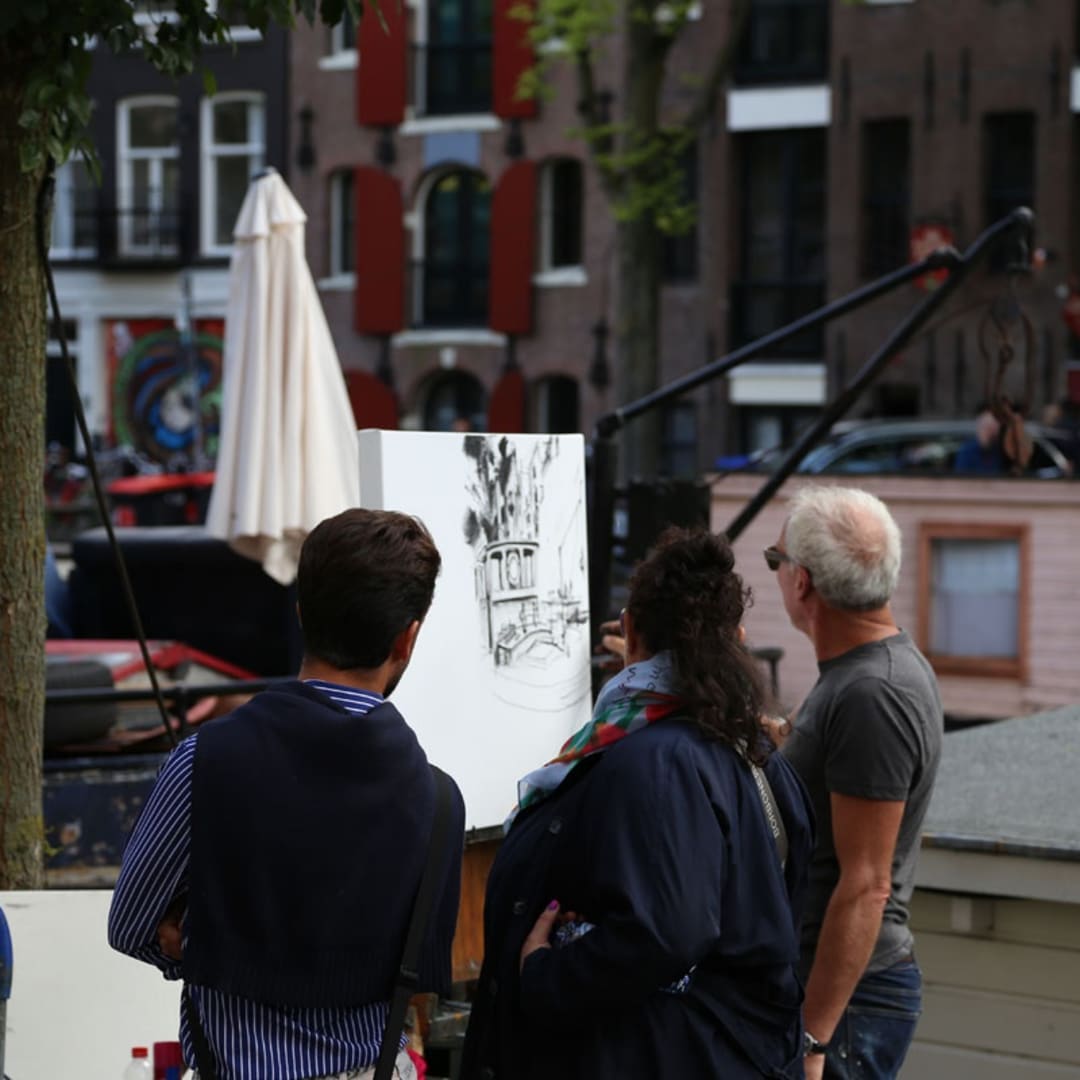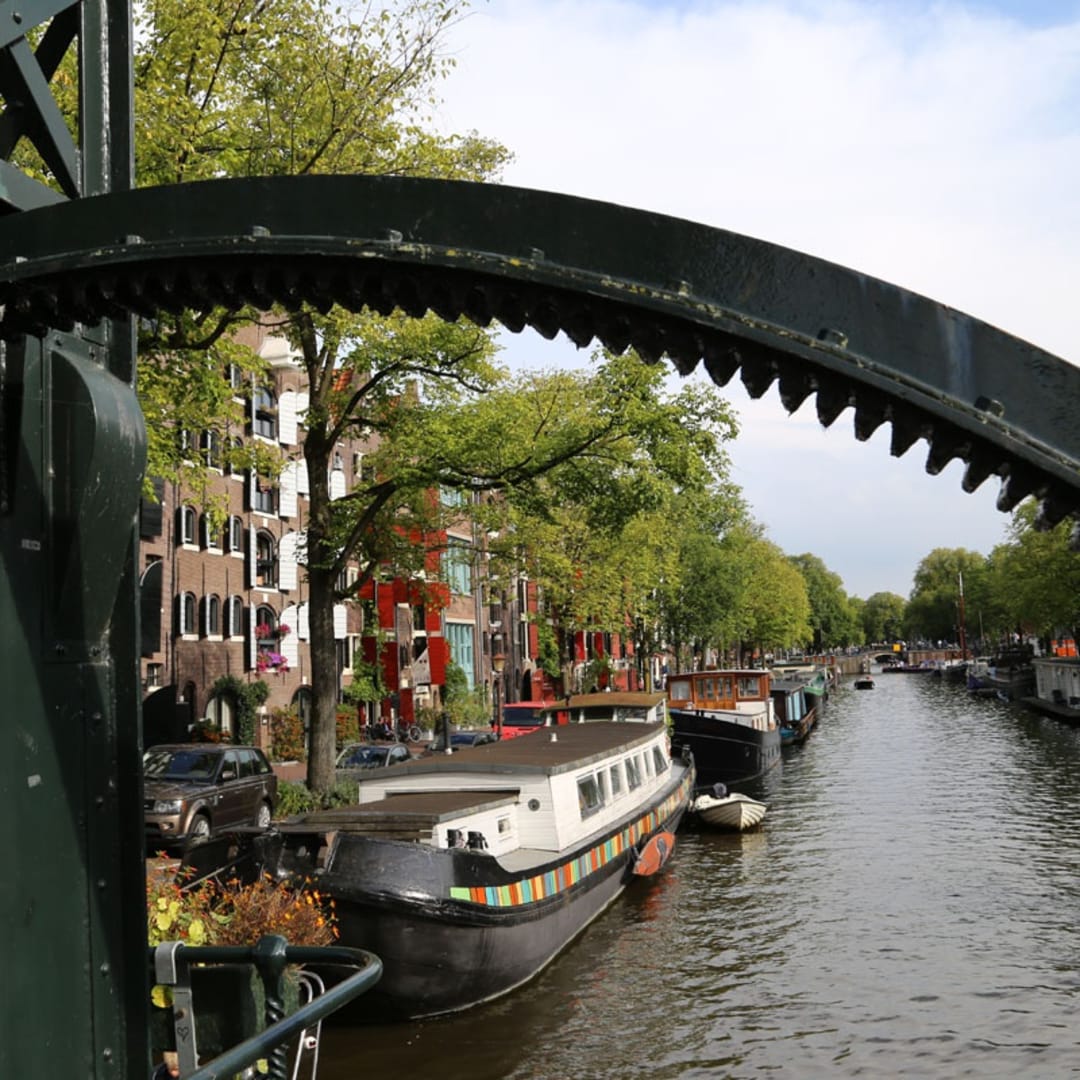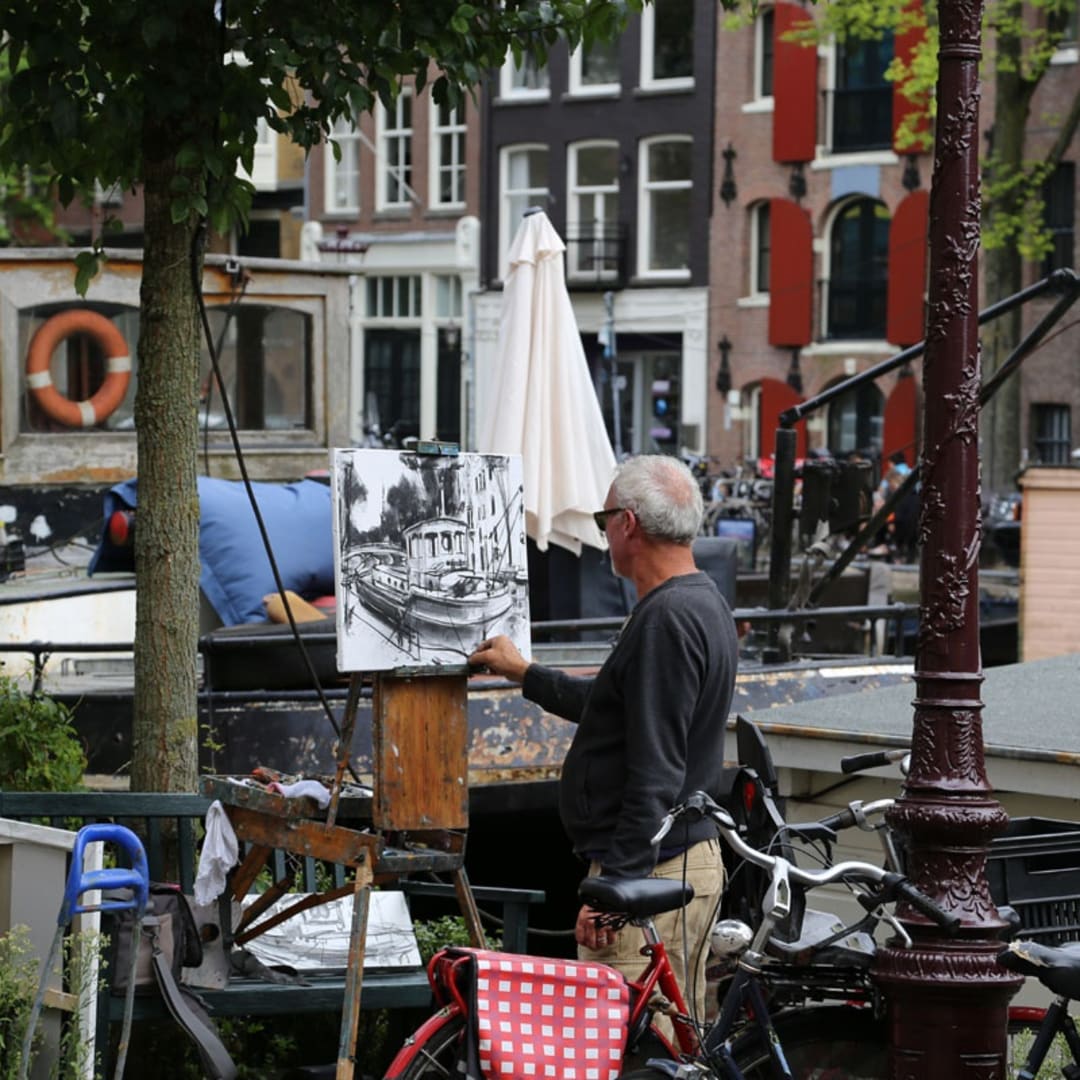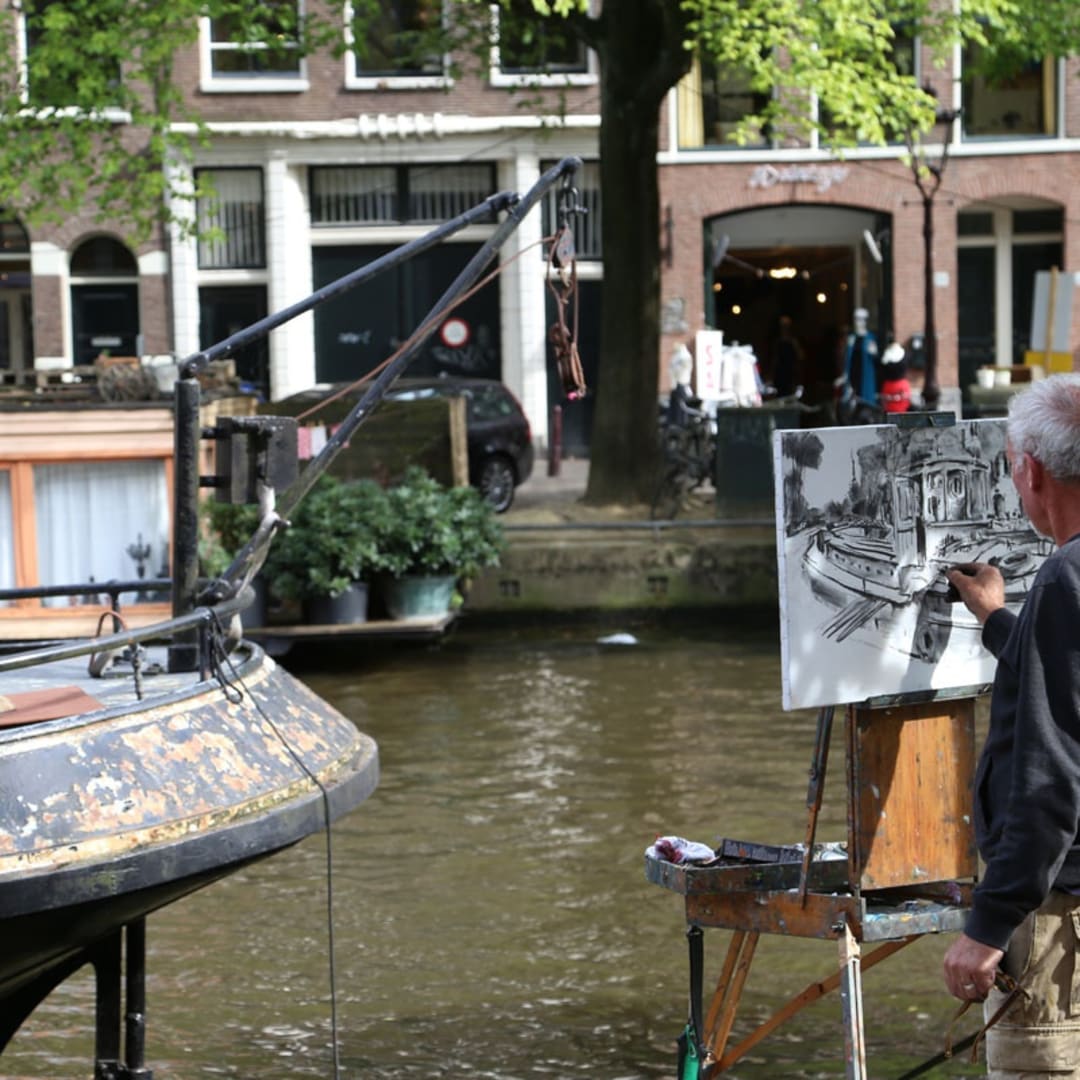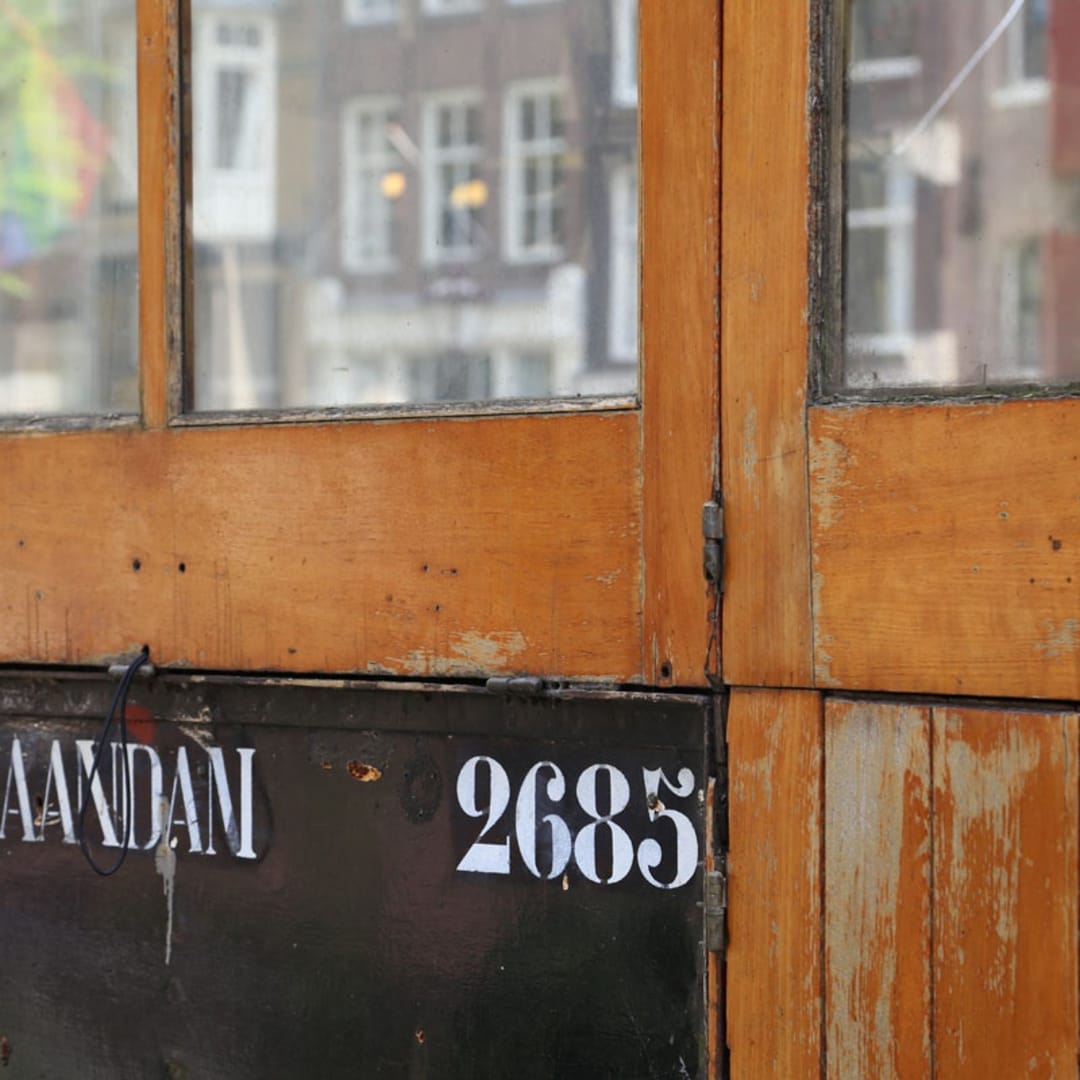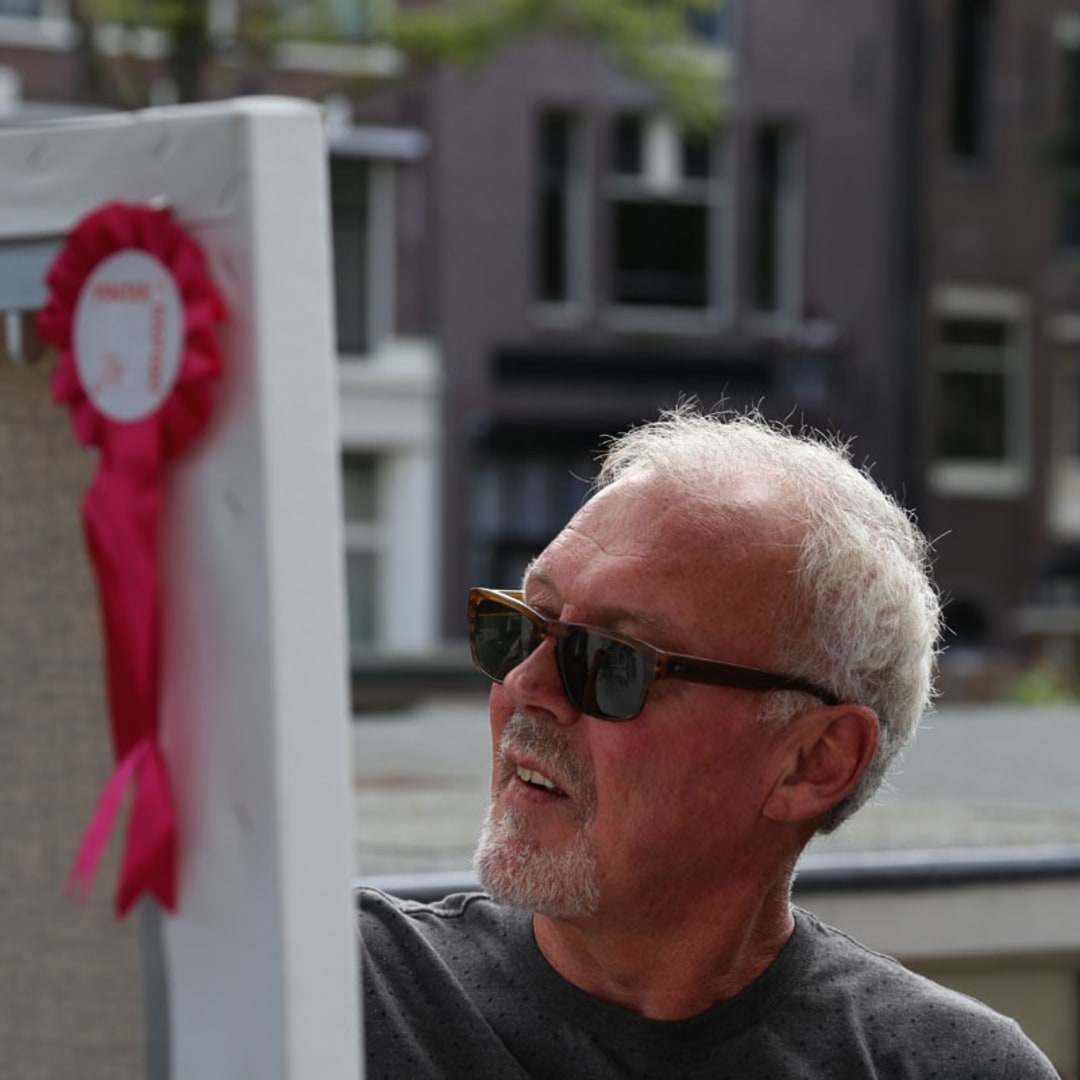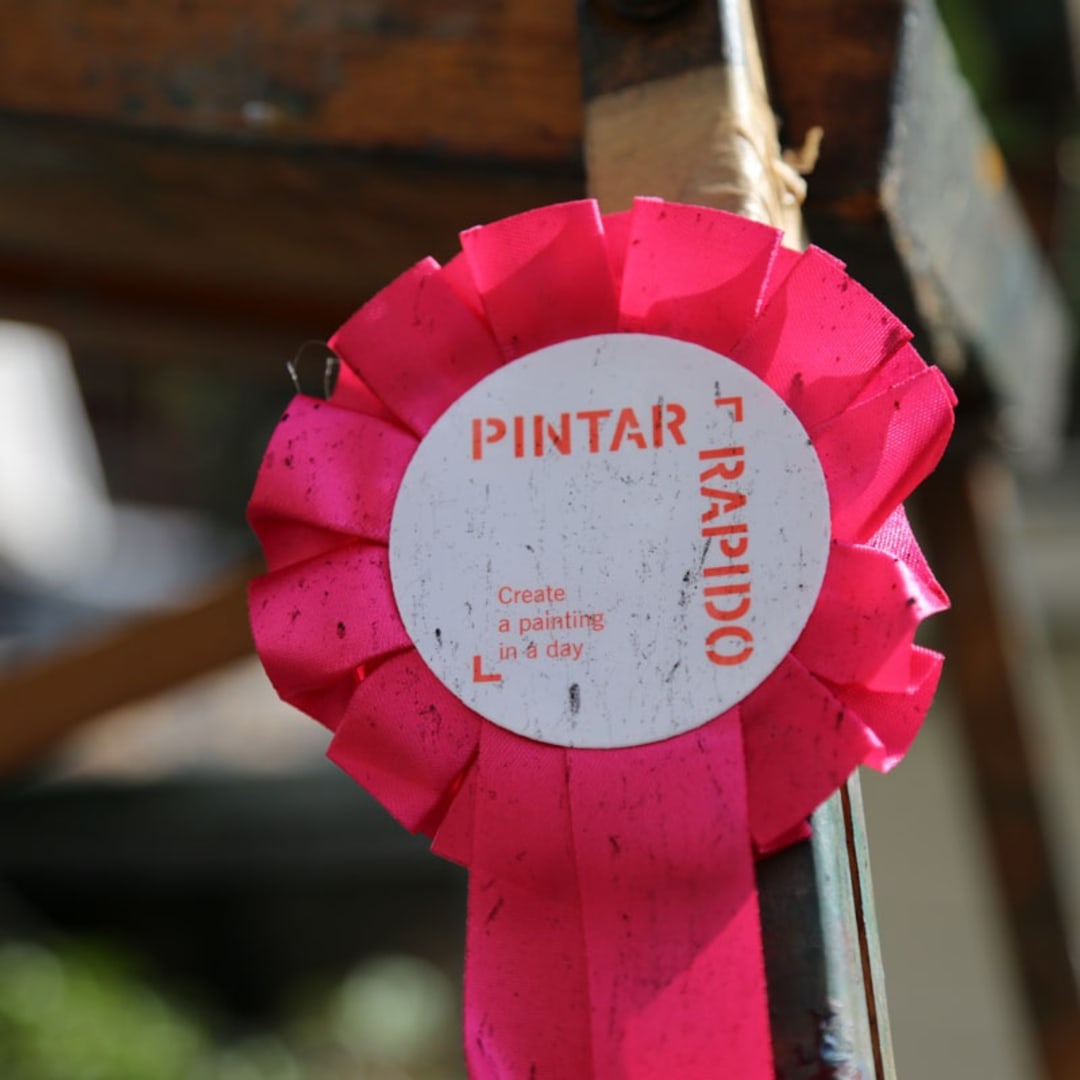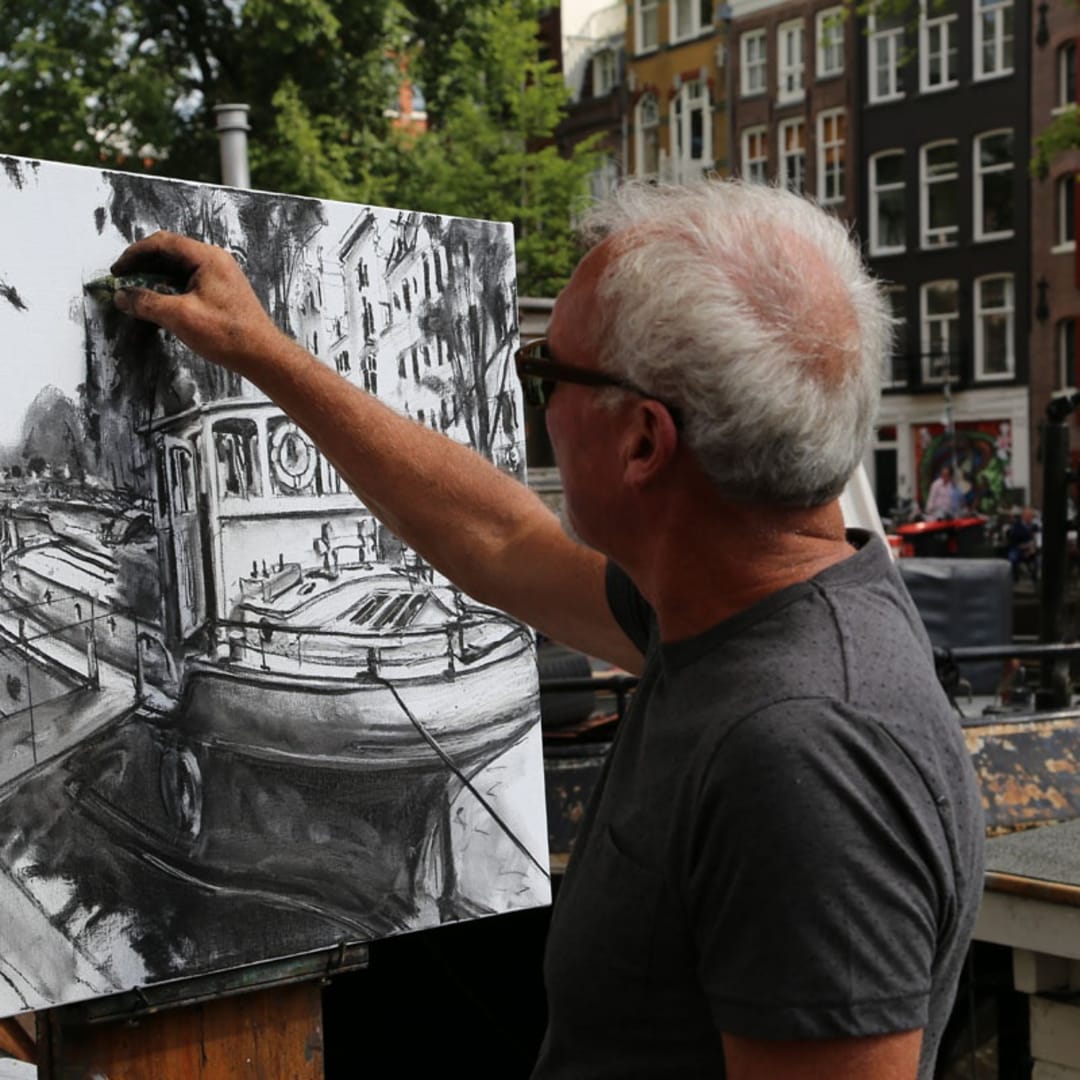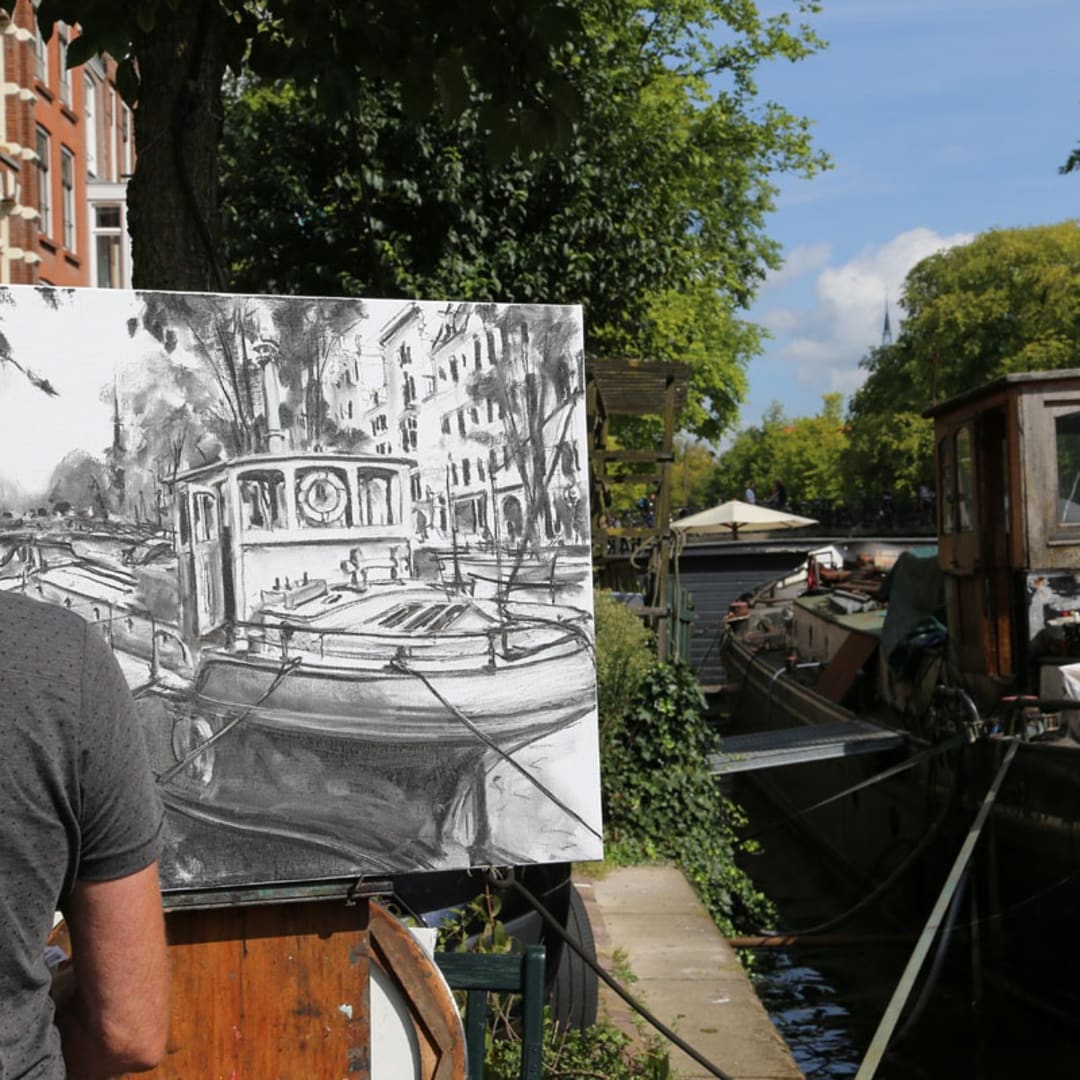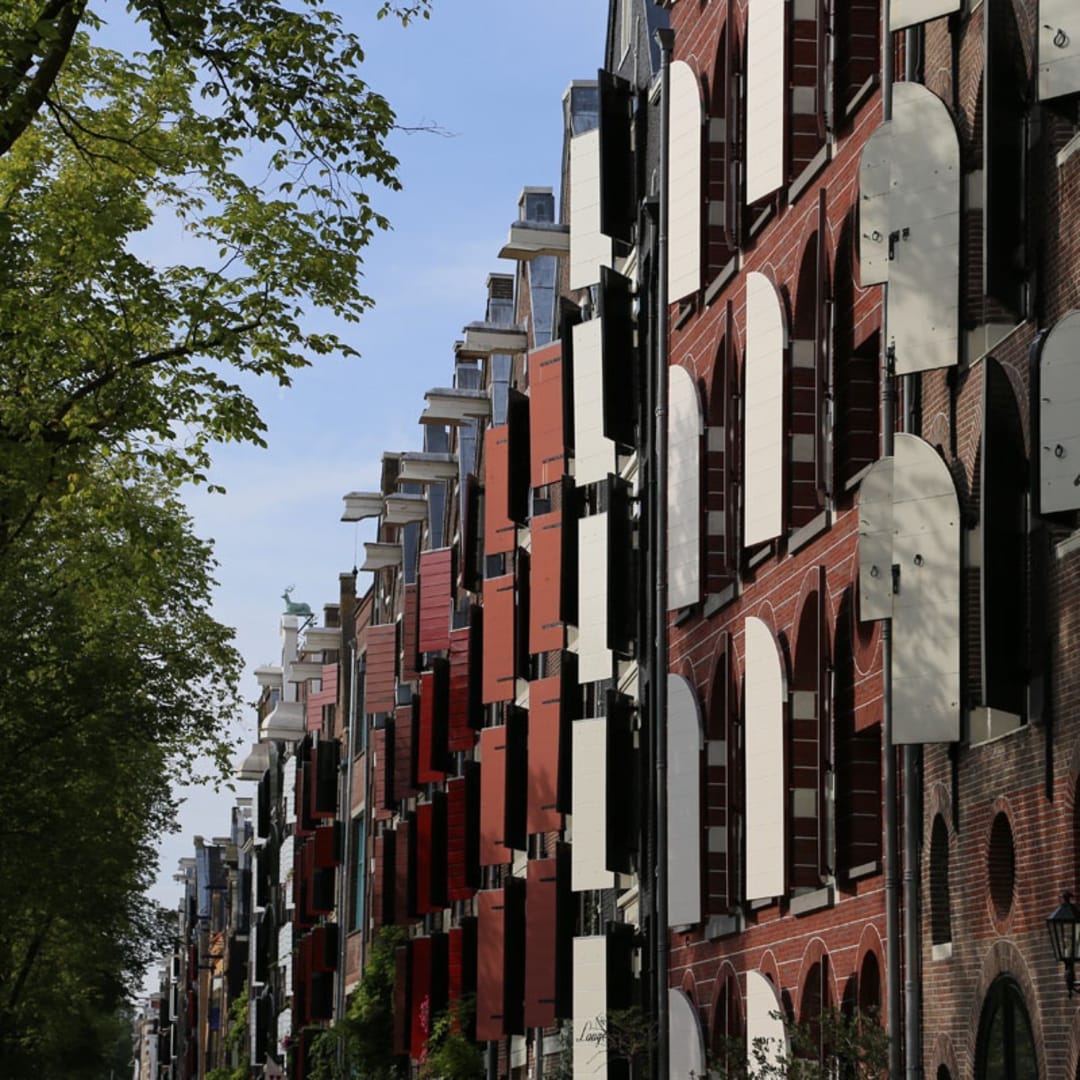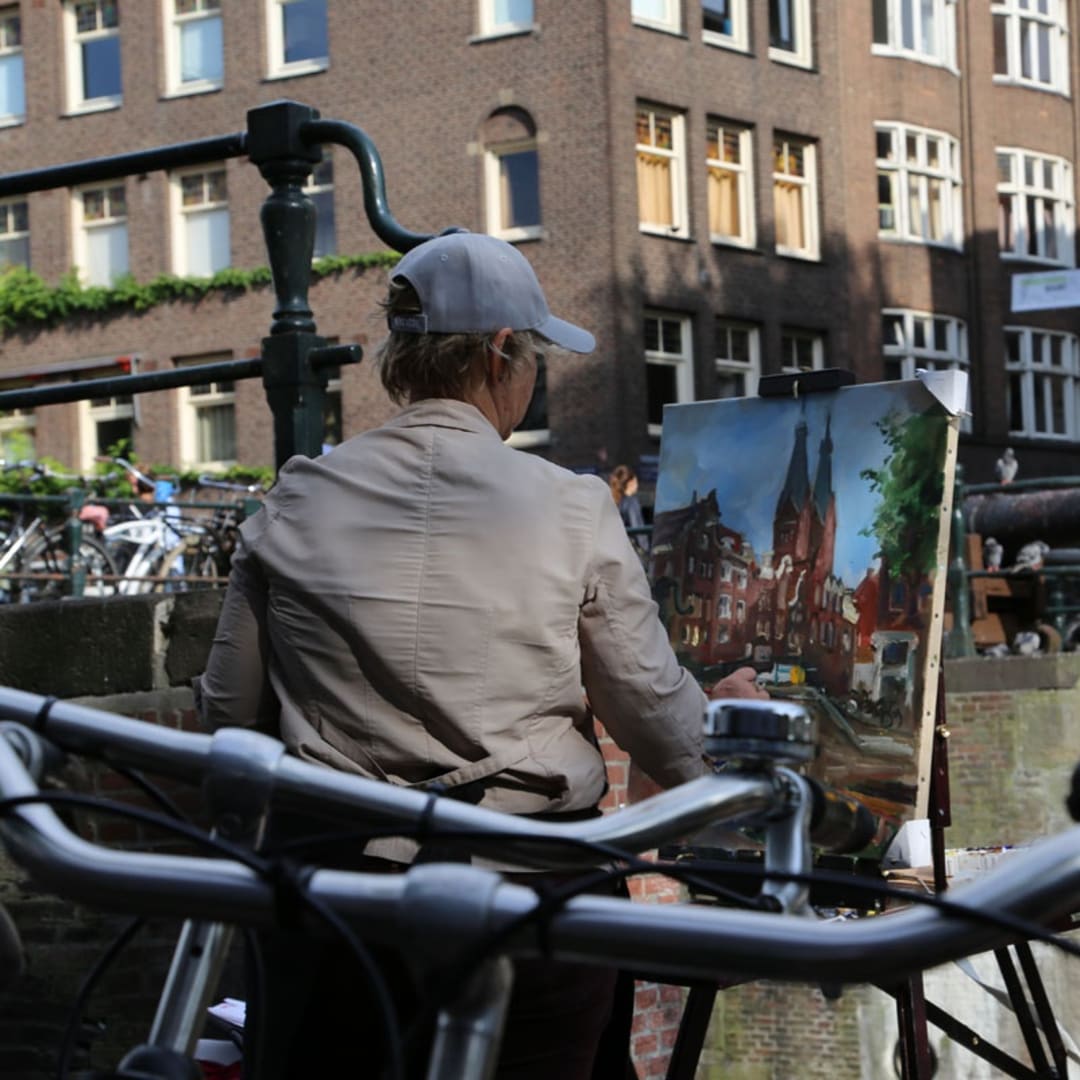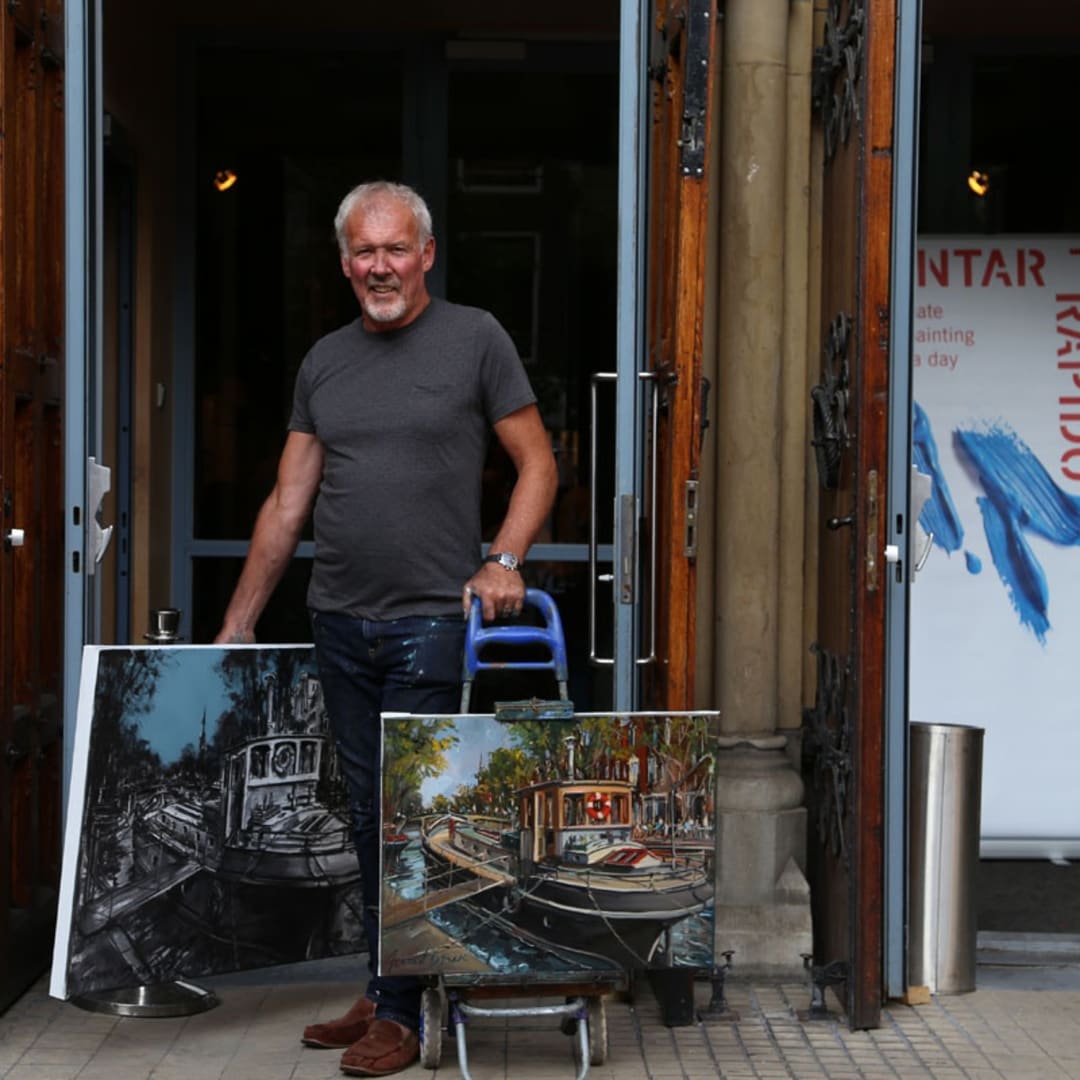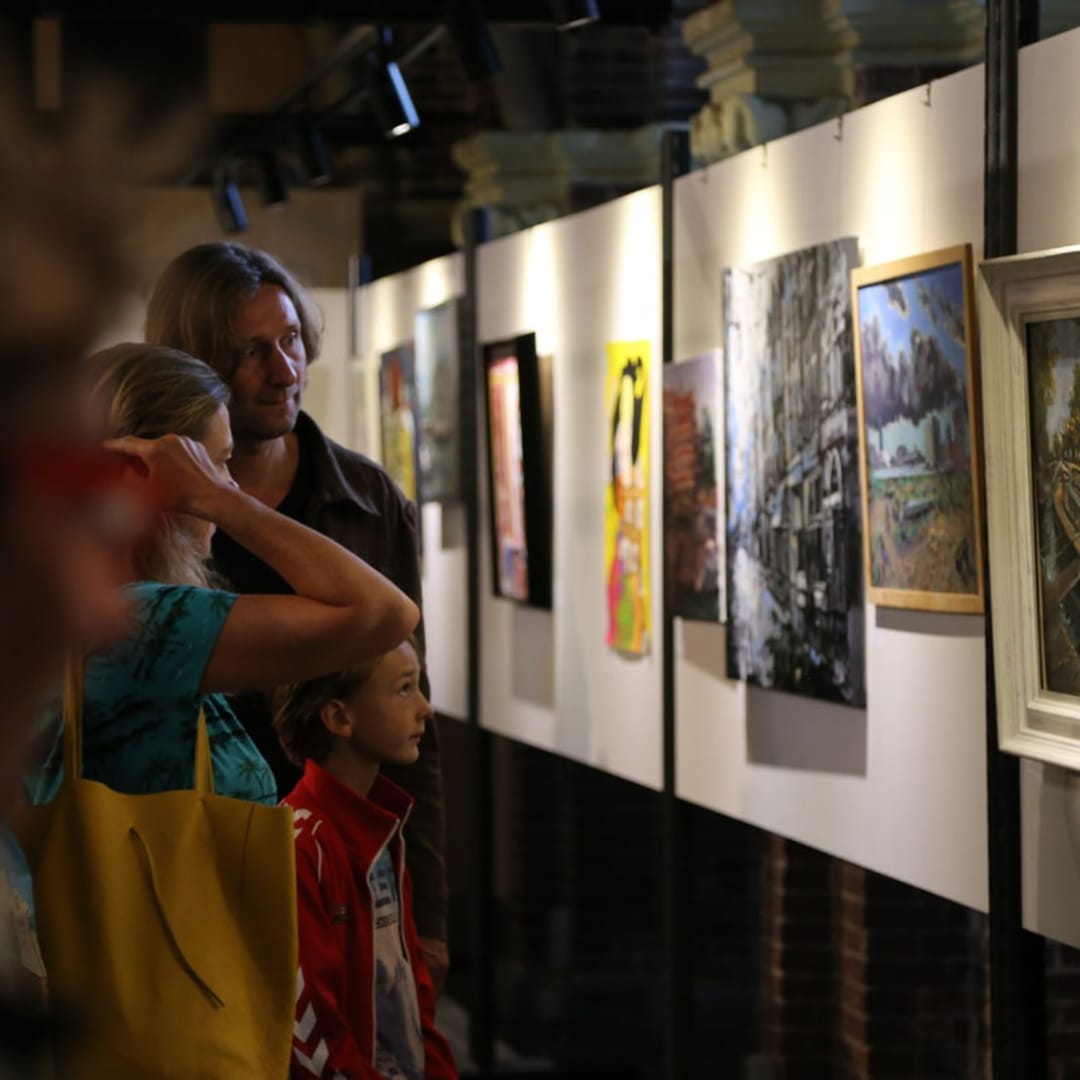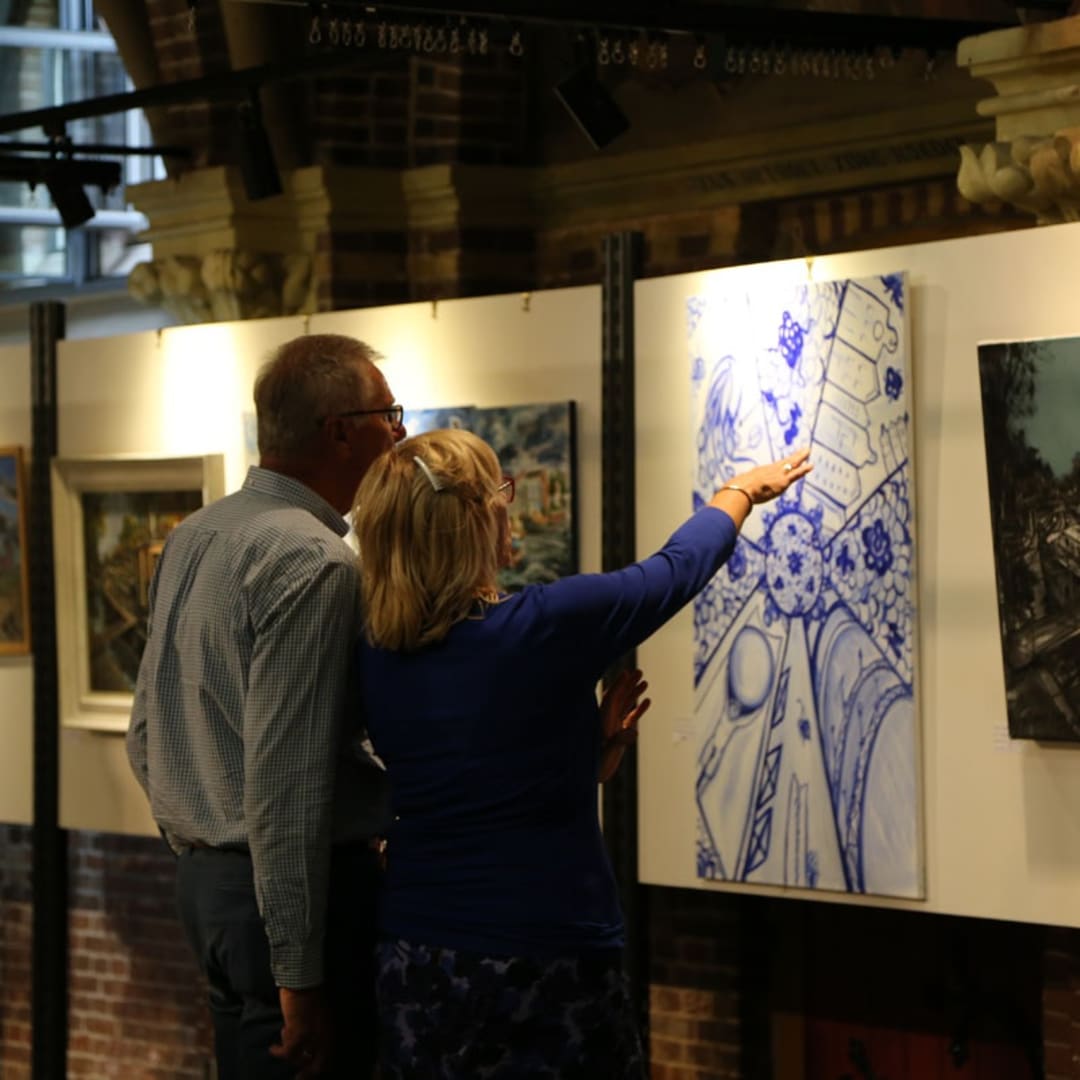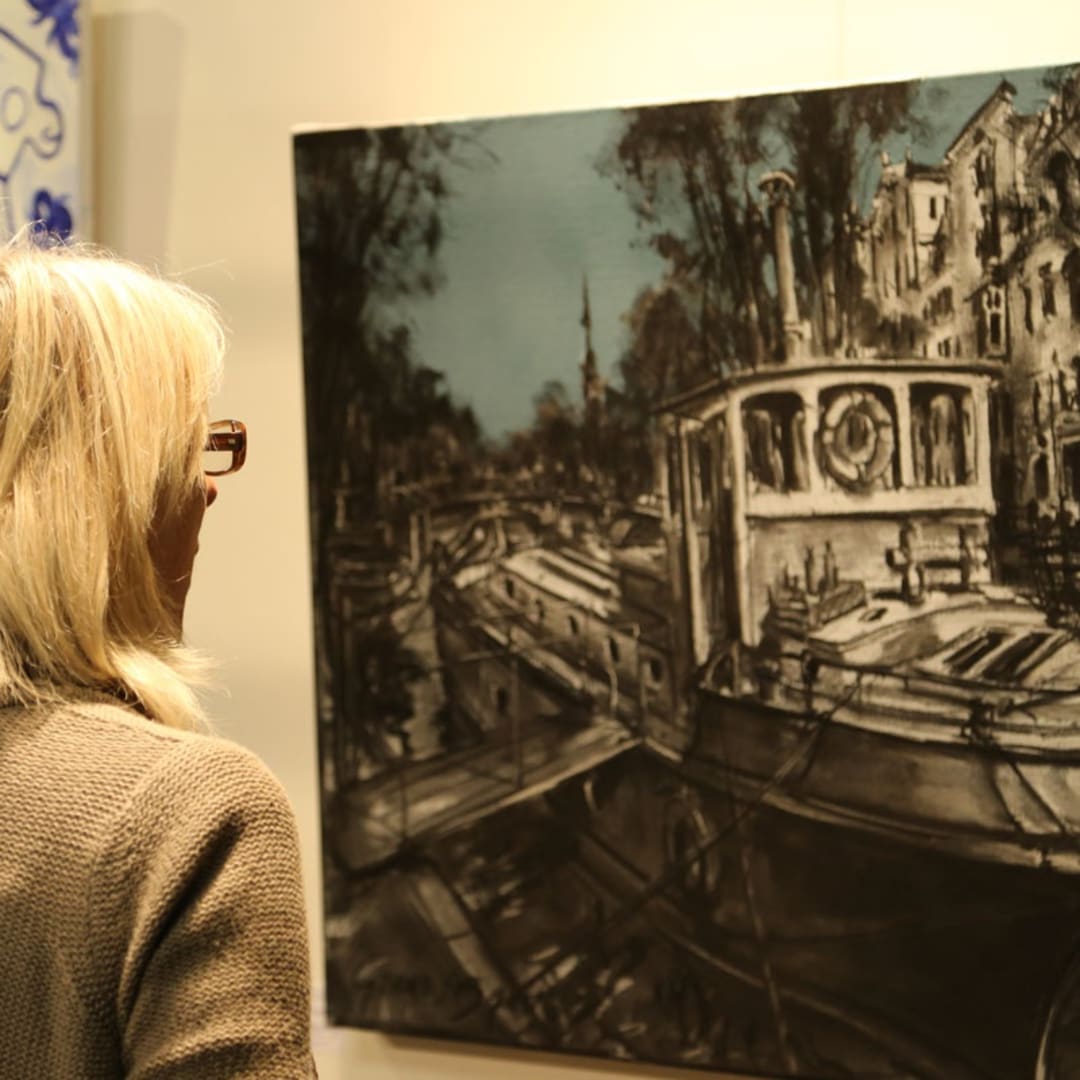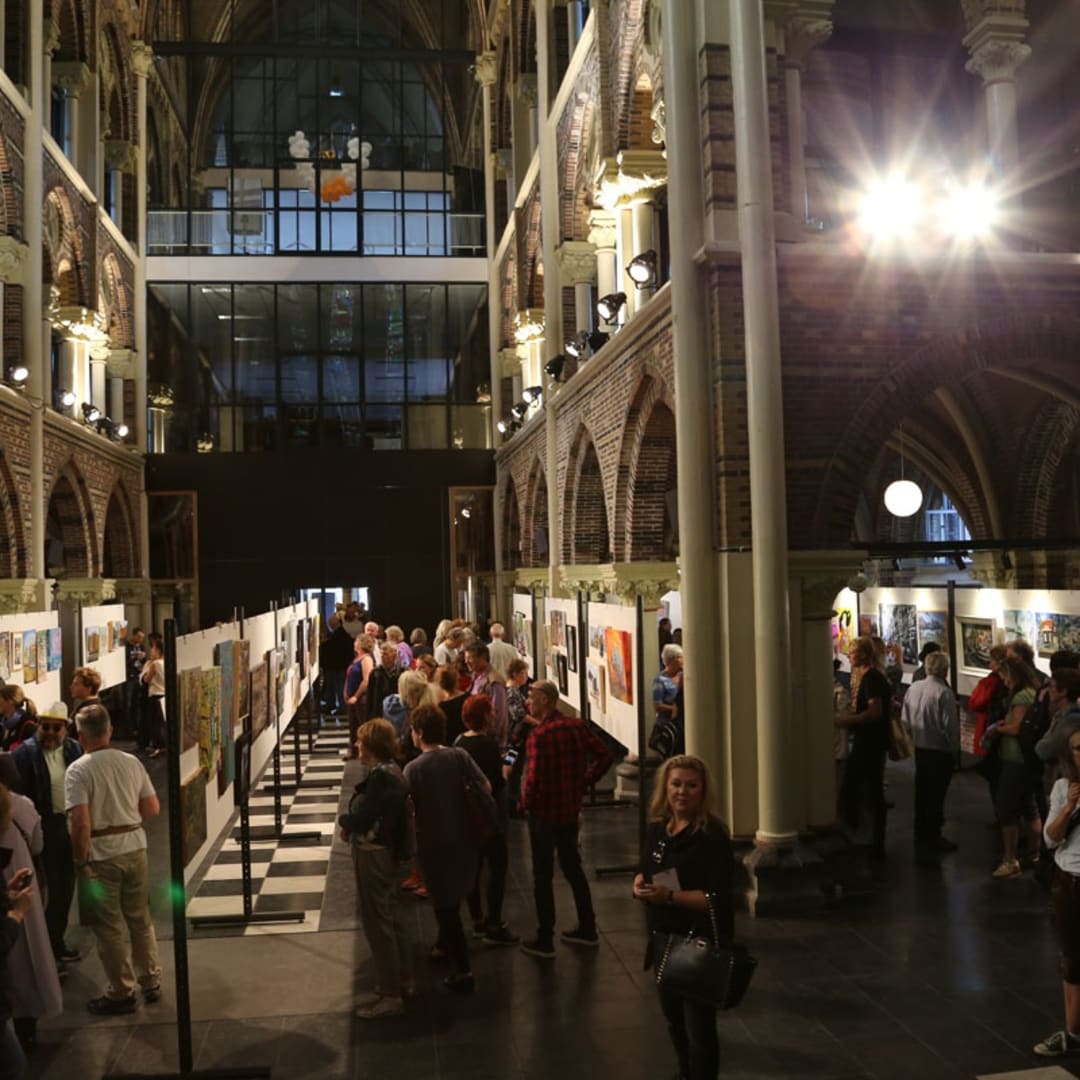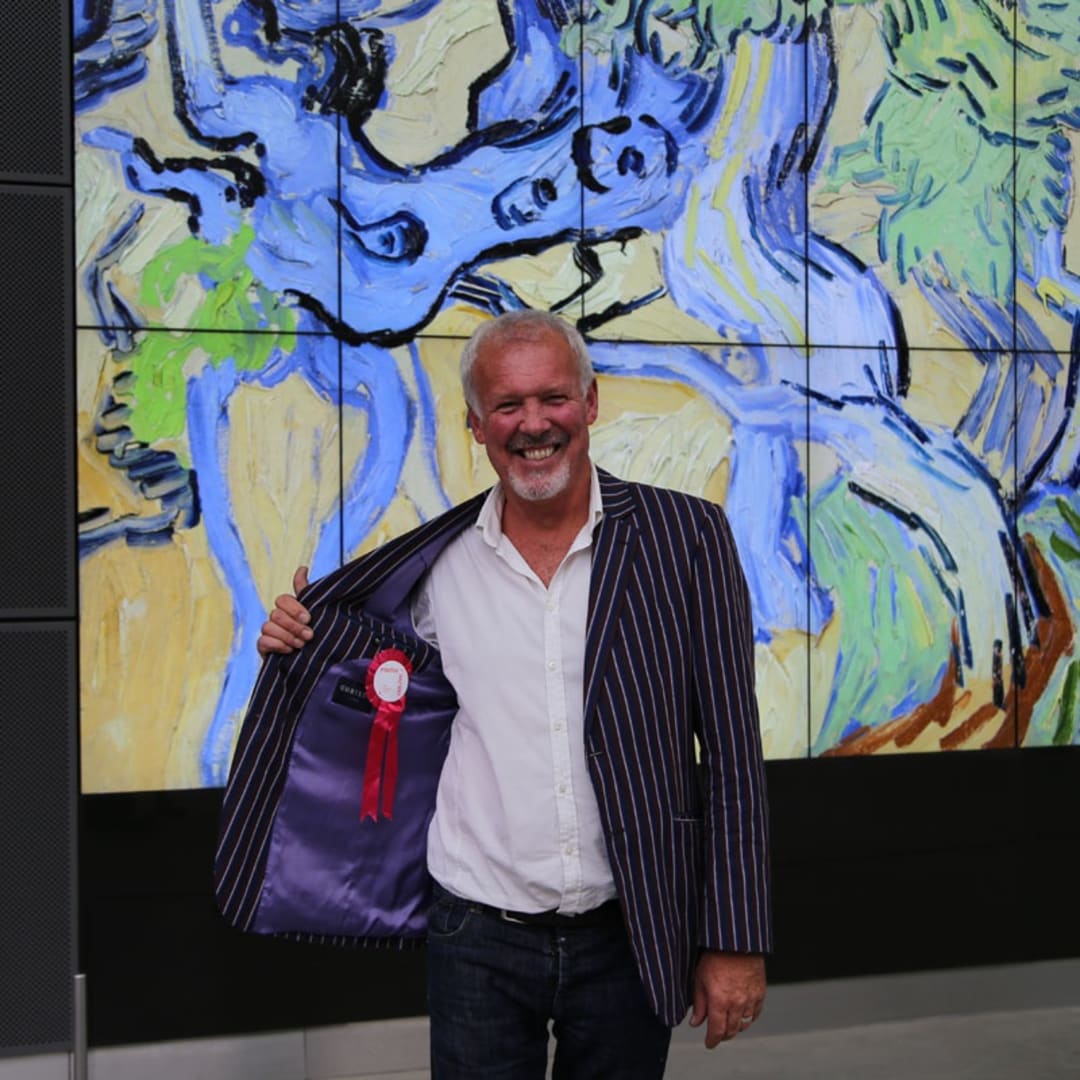Gerard’s artistic life has a funny way of finding inspiration in the most far-fetched occurrences. It is not an exaggeration to say that his every painting escapade ends with an anecdote or two.
This year, Gerry has participated in two Pintar Rapido festivals, one in London, in July, and the second in Amsterdam, in September.
The London festival ended with a great success whereby Gerry received the 2nd prize for his Sunny Day at Hammersmith Bridge work.
The Pintar Rapido in Amsterdam and his 'TAD ZAANDAN canal barge' hasn’t won him any prizes, however, it painted an unusual story instead which will shed some light on who Gerry really is behind the scenes.
Gerry and his wife Agata decided to arrive to Amsterdam, the “small city, big heart” (or rather big ART), a couple of days before the competition; to settle in and scout around the city in search of an unusual and inspiring painting spot. It is almost never an easy task to find “it”. “It” being the ambiguous “thing” which calls his soul. But Amsterdam calls out creativity. Amsterdam is art. It is as picturesque as it is diverse, but, occasionally, it also has the not so soul-calling van parked in wrong place, or roadworks - a minor obstacle to most people, but an absolute chaos and disorder to artists.
At last, the day before the competition, Gerry found the source of his inspiration, a place where his imagination would belong to for the next 48 hours. He would have an extra day to sketch the object and prepare himself for any eventuality.
TAD ZAANDAM, a 150 year-old vintage boat was floating heavily on one of the Amsterdam’s canals. It looked solid, with a character. It looked as if it had a great story to tell.
The owner was sitting on a sofa on the deck of the boat, reading.
Before Gerry started setting up his painting gear, Agata suggested that, out of courtesy, they should ask “the permission to paint it”. Gerry didn’t like the idea so much. Art is free. Art is showing gratitude. Art is paying respect to the chosen painting matter. Why would anyone object? Agata insisted though and so she asked:
- “Excuse me, would it be possible for my husband to paint your boat?”
- “Do WHAT?”, asked the Dutch offended.
- “Your boat, my husband would like to paint it”.
- “What a question!? With what, watercolour paint?”, asked sarcastically.
- “No, oil paint”, she answered still somewhat surprised by his overreaction.
- “You must be out of your mind! Who do you think you are?” shrugged the Dutch and continued his interrupted reading.
- “How about he uses charcoal?”, she continued calm and patient.
- “I said no! Get out of my way now!” replied quite bluntly.
Disheartened and ready to continue the search, Agata turned around to Gerry and saw he was already in the middle of setting up his easel. He had made up his mind already and he was taking the ownership of his inspiration. His hands were shaking nevertheless.
“I am not going anywhere, I will stay here and paint. Come and stop me.”, said Gerry.
The owner turned around, his face painted with anger and the how-dare-you expression, and all of a sudden burst out laughing. He now understood what the “painting the boat” really meant and with a much affectionate voice this time, said:
- “Your husband can’t paint my boat, but of course he CAN PAINT A PICTURE OF MY BOAT”.
He then apologised countless times and made sure that Gerry was comfortable whilst doing his work of art.
(The man by the lamp post on the photograph below is the boat’s owner).
Due to the temperamental weather on the day of the competition, and not sufficient light, which is essential for oil paintings, Gerry decided to do a charcoal sketch of the boat and had left the oil paints untouched until later, when the clouds would have opened up and sky brightened up. Only few hours before the end of the competition, weary from all the concentration, he picked up another canvas, did another charcoal sketch, this time basic, in just 20 minutes, and started colouring it. Meanwhile, Agata acted as the time keeper, making sure that by 530pm the painting was finished, everything wrapped up and with still enough time for both to run back to the Posthoornkerk church to submit the work.
Although standards of the competition were extremely high and Gerrard had left with no prize, it was the story built around those Amsterdam days that mattered the most really - the often complex communication between people, but also fearlessness in taking ownership of that what inspires us.
There of course couldn’t be a better way of ending the trip than by admiring the work of Van Gogh, Gerard’s master and greatest inspiration, at the Van Gogh Museum.
